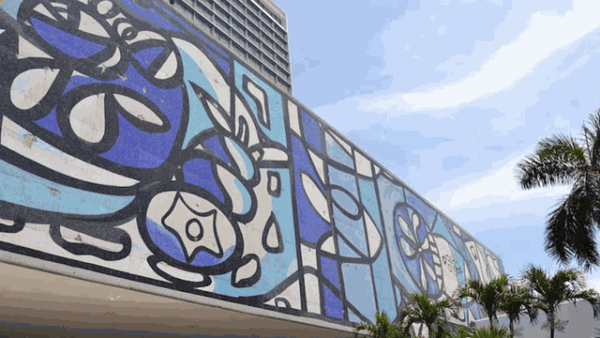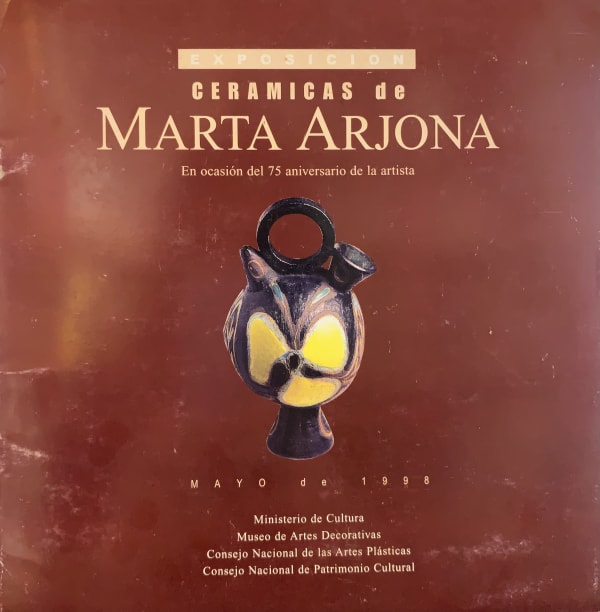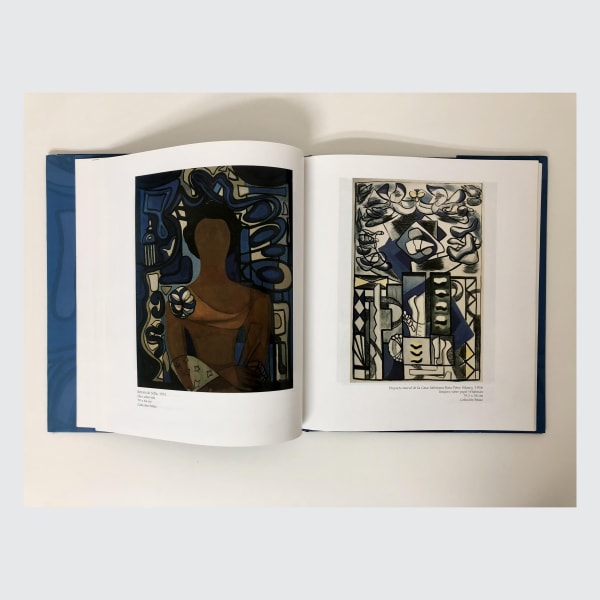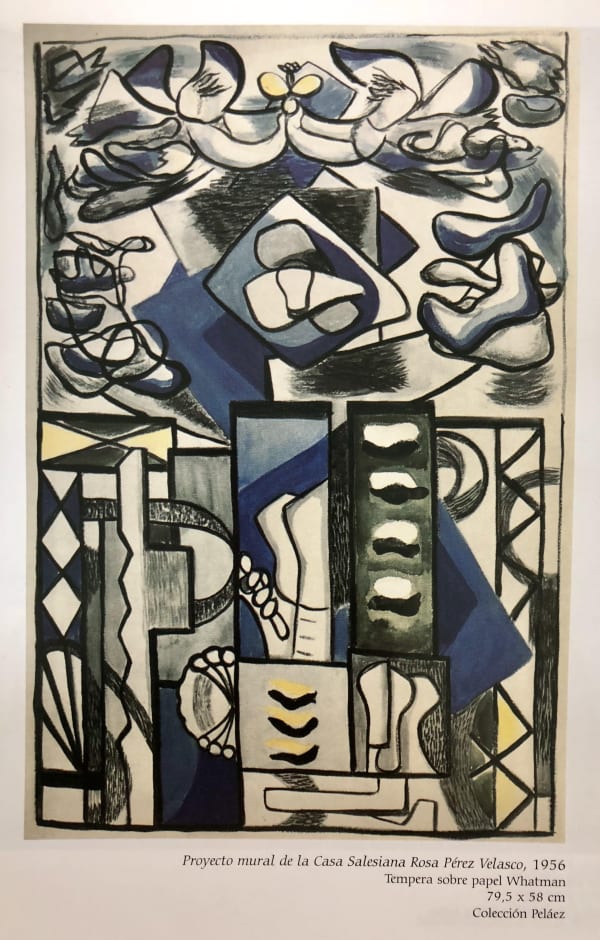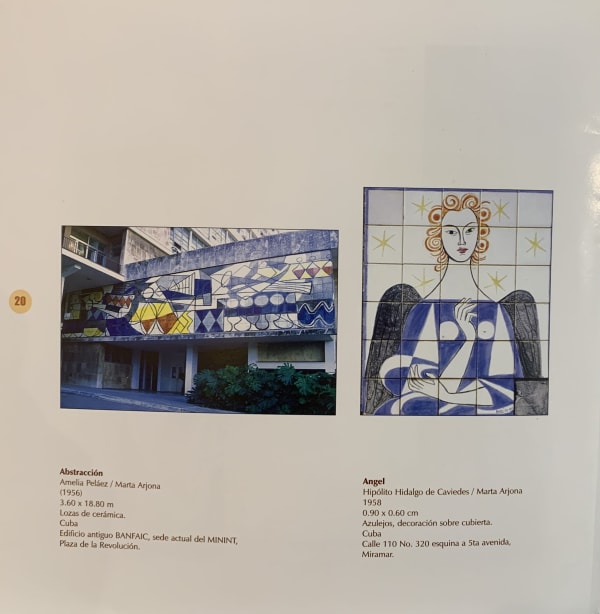This gorgeous ceramic mural by Amelia Peláez and Marta Arjona was painted by the latter from Amelia's original drawing, and fired by René Valenzuela*. It was a mural project for the Salesian Rosa Pérez Velasco house.
Marta Arjona studied drawing and modeling at the San Alejandro National School of Fine Arts in 1945 and later ceramics at the École de Métiers d'Arts Appliqués in Paris, France. She collaborated with other artists besides Pelaez, such as René Portocarrero and Mariano Rodríguez. Likewise, she has served as president of the National Council of Cultural Heritage and director of the art gallery Nuestro Tiempo. She also collaborated in the drafting of legislation for the protection of cultural property.
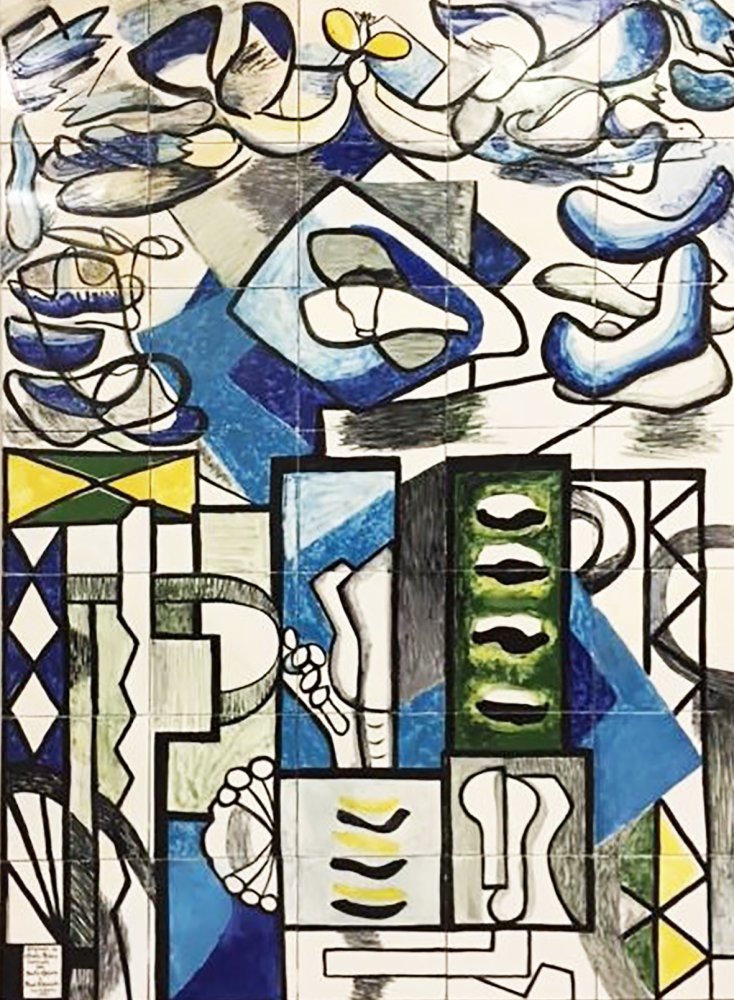
The mural for the "Salesian School" as designed by Amelia and reproduced in the book by Alejandro Alonso was never realized. A variation of it was realized instead.
In every single trip to Havana, I would have lunch with Alejandro Alonso, originally a deputy director of the Museum of Fine Arts of Cuba and later director of the Museum of Ceramics, and Marta Arjona, who had been director of the Museum of Fine Arts and was now the long-term head of the "Patrimony", the ultimate authority on what left the country and what stayed. In her career as an artist, Marta had been a ceramicist, a colleague, and close friend of Amelia's. During one of these lunches, I suggested that we should build the mural as originally intended by Amelia; there was a general consensus that this would be a contribution to Cuban art, akin to the time when we had produced the bronzes of the Jose Sicre sculpture "La Fuente" from the Twenties, from the original plaster in the Museum's collection.
Marta would take care of the design using 12" tiles, in a 7x5 pattern, to match the proportions of the original drawing. Rene' Valenzuela, long-time fabricator of Sosabravo's ceramics, would handle the firing of the ceramic; credit would be given to both, as well of course as to Amelia.
It is well known that the largest and most famous mural by Amelia, installed at what was then the Havana Hilton, and later became the Havana Libre, had been fabricated in Italy using a mosaic method; Amelia never went to Italy to supervise or approve the work. Over the years, the mosaic tiles started falling, creating a danger to passersby. Thus the original mural was removed, and it was replaced by ceramic tiles made in Mexico; by that time Amelia had already died, so she never saw the new mural, which is universally acknowledged to be nevertheless "her" mural.
So why should we not consider our mural as being by Amelia? After all, during her lifetime she solicited the help of the same Marta Arjona, to realize some other murals, which are considered joint works of the two artists, as this one should.
ABOUT AMELIA PELAEZ
Amelia Peláez was born in 1896 in Yaguajay, in the former Cuban province of Las Villas (now Sancti Spíritus Province). In 1915, her family moved to Havana, to the La Víbora district, and this gave her the opportunity to enter the Escuela Nacional de Bellas Artes "San Alejandro" at the rather late age of 20 years (students at this academy usually start at 12-13 years of age). She was among Leopoldo Romañach's favourite students. In 1924 she graduated from San Alejandro, and exhibited her paintings for the first time, along with another Cuban female painter, María Pepa Lamarque, at the Association of Painters and Sculptors in Havana. Receiving a small government grant, she travelled to New York City in the Summer of 1924 and began six months of study at the Art Students' League. In 1927, after being awarded a larger grant, she began studying in France, while paying short visits to Spain, Italy, and other countries. In Paris, she took drawing and art history courses at the Académie de la Grande Chaumière, the École Nationale Supérieure des Beaux-Arts, and the École du Louvre. In 1931 she began studying with Russian painter Alexandra Exter, whose classes in color theory and design were an important influence.Galerie Zak hosted an exhibition of her paintings in 1933, and the following year she returned to Cuba. Peláez received a prize in the National Exposition of Painters and Sculptors in 1938, and collaborated on several art magazines in Cuba, such as Orígenes, Nadie Parecía, and Espuela de Plata. In 1950 she opened a workshop at San Antonio de los Baños, a small city near Havana, where she dedicated herself, until 1962, to her favourite pastime of pottery. She sent her paintings to the São Paulo Art Biennial in 1951 and 1957, and participated in 1952's Venice Biennale. In 1958 she was a guest of honour and jury member at the First Inter-American Biennial of Painting and Printmaking in Mexico City, although she pulled out of the raucous and controversial jury discussions based on what she reported to be "an openly Communist bias in the decisions." Aside from painting and pottery, she dedicated time to murals, located mainly at different schools in Cuba. Her most important works of this type are a ceramic mural at the Tribunal de Cuentas in Havana (1953) and the facade of the Habana Hilton hotel (1957). The works of Peláez are held in the Museo Nacional de Bellas Artes de La Habana and the Museum of Modern Art, New York. Peláez died in Havana in 1968.
___
*He was the fabricator of all Alfredo Sosabravo's ceramics.



